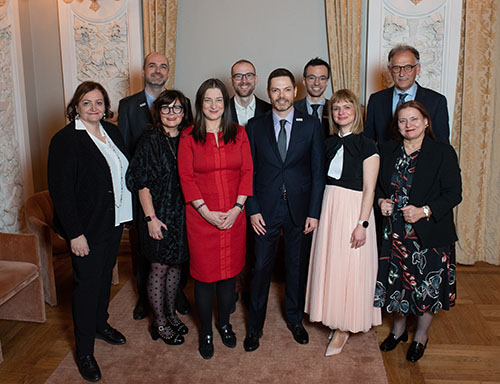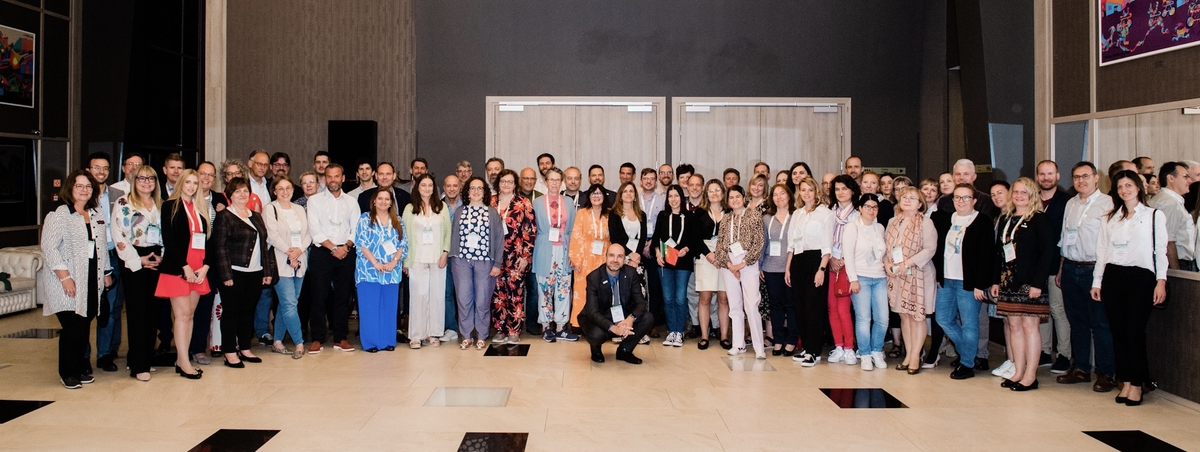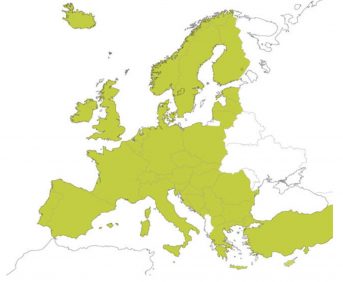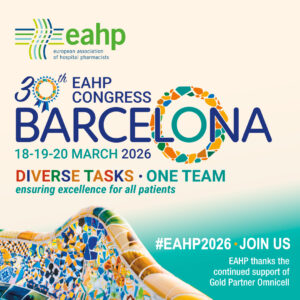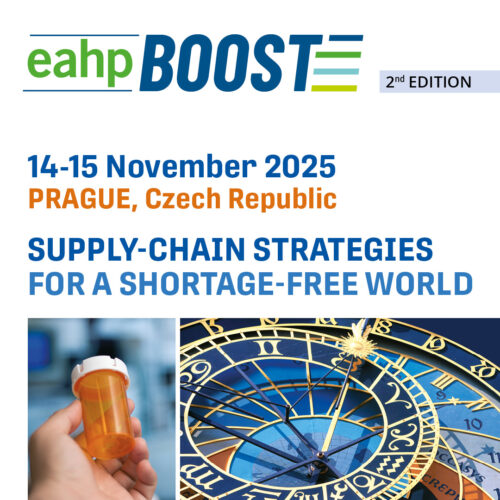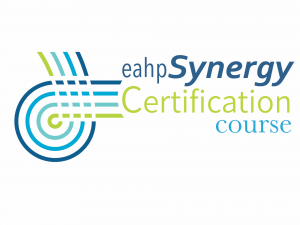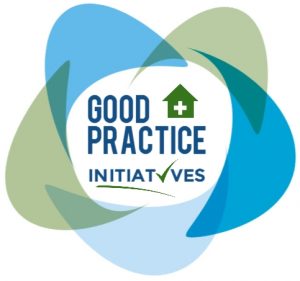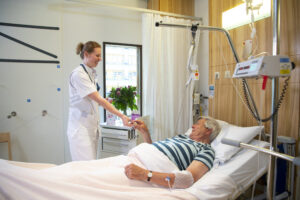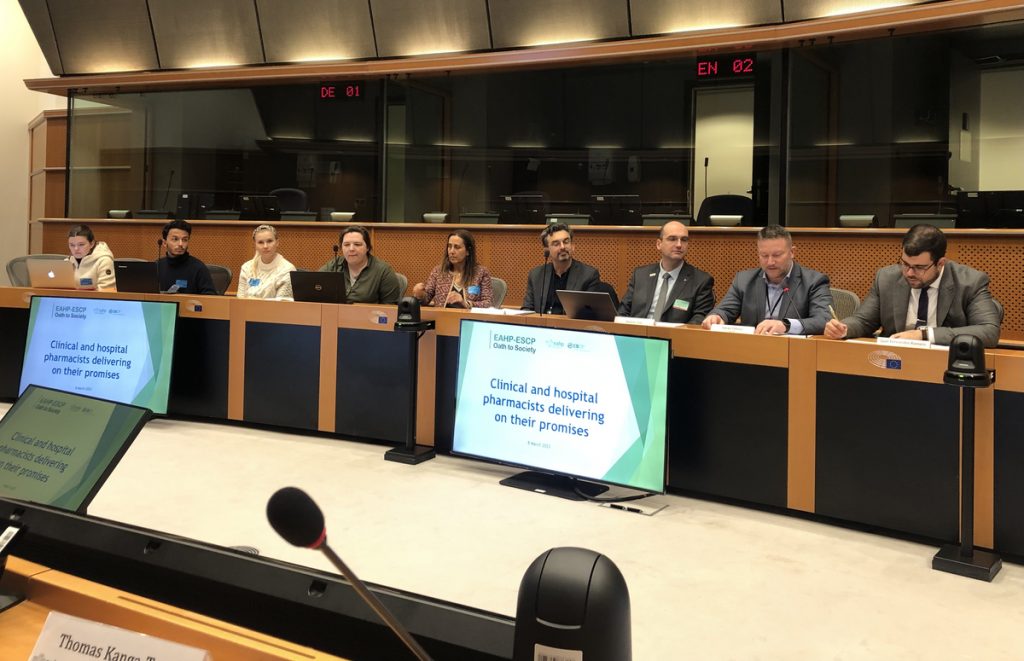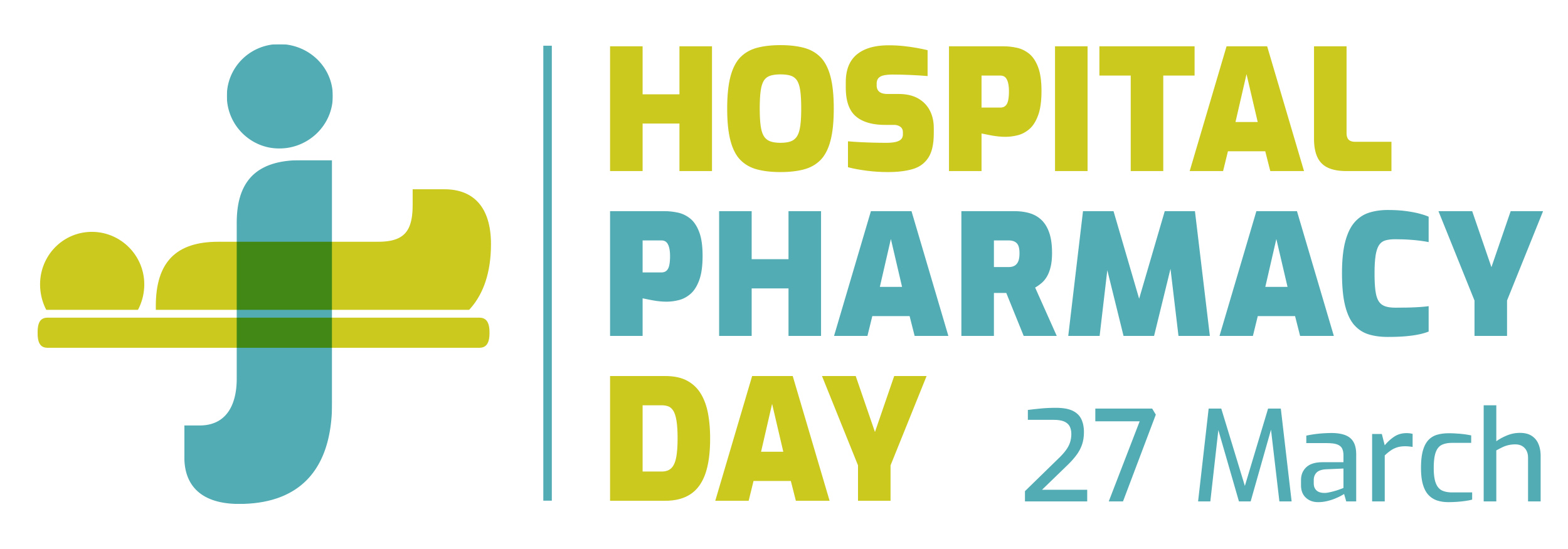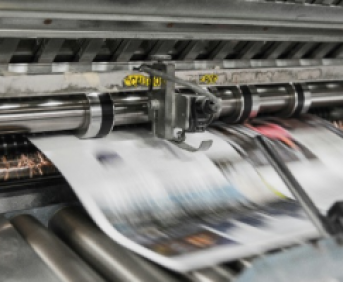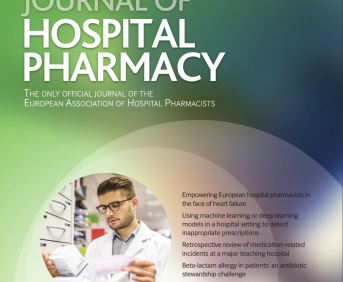FIVE YEARS OF A BIG CONTRIBUTION FOR THE SMALLEST AMONG US – THE IMPLEMENTATION OF AN INTRAVENOUS-SERVICE ON NEONATAL INTENSIVE CARE UNITS BY THE HOSPITAL PHARMACY
Pdf

European Statement
Production and Compounding
Author(s)
Boglárka Lengyel
Nadine Haubenwalllner
Ingrid Sattlecker
Why was it done?
The global shortage of nursing staff increases the risk for medication errors due to higher workload and stress. The intravenous (I.V.)-service, launched in March 2020, alleviates nurses’ workload and minimizes application errors by standardizing concentrations and providing pharmaceutical training. Producing all infusions with producing pumps in the hospital pharmacy’s clean rooms improves microbiological quality and dosing accuracy. Standardized concentrations with defined stability and proper documentation practices ensure consistent quality.
What was done?
We implemented the production of patient-specific I.V.-infusions and total parenteral nutrition (TPN) for neonatal intensive care units (NICU) to meet the specialized needs of neonates and enhance individualized care. Additionally, pharmacy staff assembles patient infusion sets daily, focusing on Y-Site compatibility and catheter types tailored to each patient.
How was it done?
After discussing demand with physicians and nurses, data on NICU medications and dosages were systematically collected. Standard infusion concentrations were harmonized, considering fluid intake and physical-chemical stability. Protocols for automated compounding of continuous infusions and TPN were established, alongside standard operating procedures for additional volumetric preparation. I.V. compatibility of the drugs was researched, and compatibility tables were created.
What has been achieved?
The project successfully implemented individualized compounding of infusions and TPN with established standards in the hospital pharmacy’s clean rooms. Complete traceability and continuous monitoring during production ensure high product quality. The initiative enhanced interprofessional collaboration, strengthening confidence among physicians, nurses, and pharmacists and significantly reduced nurses’ workload for preparing medications, TPN, and assembling patient sets. The service currently supports five wards, producing an average of 98 infusions and TPN daily. The assembly of patient sets is provided for 44 care beds across NICU and Intermediate Care (IMC) wards, averaging 25 sets daily.
What next?
The service aims to maximize automated production by implementing new compounding pump plans, increasing output to supply more wards. Plans also include expanding the service to the Pediatric Intensive Care Unit (PICU), where both intermittent infusions and patient set assembly will be offered in addition to the existing continuous infusion supply.
3D-PRINT OF ORALLY DISINTEGRATING TABLETS – HOW TO GET STARTED
Pdf

European Statement
Production and Compounding
Author(s)
K. Koch, The Pharmacy of the capital region of Denmark, Quality, Herlev, Denmark
R. Højmark, The Pharmacy of the capital region of Denmark, non-sterile production, Herlev, Denmark
L.R. Duckert, The Pharmacy of the capital region of Denmark, non-sterile production, Herlev, Denmark
T. Schnor, The Pharmacy of the capital region of Denmark, production, Herlev, Denmark
Why was it done?
There is an interest in implementing more safe, affordable, and sustainable treatment methods for patients for whom a personalized approach is beneficial. These treatments can be expensive and associated with patient safety and compliance issues. For the pediatric population, many medications are not available in appropriate form or dose and therefore is being manipulated before administration. Extemporaneous oral solutions often have a limited shelf life and bad physical properties or undesirable excipients.
Patients with impaired renal function or need for accurate dose adjustments are also expected to benefit from 3D-printed orally disintegrating tablets (OTDs).
What was done?
The initial steps necessary before implementing 3D-printing for manufacturing personalized ODTs has been identified and completed. The clinical advantages and barriers of the personalized treatment has been discussed interdisciplinary and the new dosage form has been risk evaluated in dialogue with the competent authority. As a result, the best suited technology has been identified.
How was it done?
The European marked has been searched for technologies suitable for extemporaneous personalized production in hospital pharmacies. 3D-printed OTDs was identified as most easily implemented both concerning technology, GMP and patient acceptance.
A dialogue about risks and benefits regarding 3D-ptinted ODTs was initiated with the hospital staff. Risks identified concerned the number of drugs available for 3D-printing, the need for stability testing and resistance from authorities. Benefits like flexibility, just-in-time preparation and patient safety was identified.
A meeting was held with the competent authority, to establish the level of validation, documentation and analysis needed on the final product and starting materials.
What has been achieved?
The necessary steps to get started have been identified and completed. Risks and benefits were assessed, and the decision about implementing 3D-printed ODTs was made. An equipment that is reliable and automated has been sourced.
An API for the initial manufacture was selected, combining clinical relevance and adequate physical properties.
Ink/matrix for the 3D-printer was evaluated and found safe for medicines for children. The matrix is manufactured according to GMP.
A regulatory framework has been agreed upon with the competent authority.
What next?
Validation of the equipment and printing of the first ODTs to be used in the clinic.
VIDEO CONTENT: FEEDBACK ON THE IMPLEMENTATION AND THE MANAGEMENT OF AN AUTOMATED CYTOTOXIC PRODUCTION UNIT
Pdf

European Statement
Production and Compounding
Author(s)
M. SIEGWART, A. BENDJAMA, D. KAROUBY, T. MARTIN, L. CITTADINI, MG. MARTINS, P. COLIAT
Why was it done?
Two automated preparation robots were implemented at ICANS in a context of increased activity in oncology, the need to maintain quality assurance in the preparation process and to reduce pharmacy technician’s exposure to cytotoxic agents. Preliminary professional training is crucial to understand this new technology, master the equipment and interfaces, and adapt to the new circuit and procedures.
What was done?
This work was the development of an educational virtual tour of an automated production unit, enriched by feedback, accessible to any professional interested in implementing an automated preparation robot.
How was it done?
The project was developed in collaboration with the Grand Est regional oncology network (NEON). Scripts were written based on a plan, detailing texts and scenarios to create short videos, each addressing a different theme with a voice-over narration. A professional team from NEON shot the film and edited according to the scripts. Location scouting and filming were completed over 3 days, with voice-over recording and editing done afterward.
What has been achieved?
Six scripts were produced. The first introduces the centre, while 4 others detail the management of an automated unit, including the organization and operation of storage areas, decontamination SAS, personal SAS, and the cleanroom (functional parameters, particulate class, airflow schema, dressing and hygiene rules, microbiological controls, cleaning, and the composition of the “breakage kit”). The robots are covered in a dedicated script that discusses the context of automation, their operation, the software used, possible interfaces, preparation procedures, and cleaning. The final script reviews the entire circuit, linking each area and stage of production: pharmaceutical validation, automated production management, material and vial preparation, manufacturing, and pharmaceutical release.
What next?
The virtual tour presents the circuit and the role of each involved personnel, highlighting precautions and subtleties compared to a non-automated circuit according to the most recent french guidelines. Although the practices shown may not be applicable to all centres due to differences in production area layouts, structures, staffing, and equipment, these videos aim to clarify the functioning of an automated unit while adhering to the guidelines. This online training can promote the standardization of practices, helping professionals from other centres install production automation systems. It encourages innovation and supports pharmacists during this critical transition.
COST SAVINGS ASSOCIATED WITH EMICIZUMAB REPACKAGING IN PEDIATRIC PATIENTS WITH HEMOPHILIA A
Pdf

European Statement
Production and Compounding
Author(s)
Saldaña Soria Raquel, Florit Sánchez María, Yunquera Romero Lucía, Fernández Martín Jesús, Gallego Fernández Carmen, Tortajada Goitia Begoña
Why was it done?
The aim of this protocol is to evaluate and quantify the cost saving of the optimisation of the use of emicizumab vials through repackaging into syringe under aseptic conditions.
What was done?
Emicizumab is indicated for routine prophylaxis of bleeding episodes in patients with hemophilia A. This drug has a significant economic impact, so it has been decided to initiate a protocol for the use of emicizumab in which it has been established to group patients and dispense pre-filled syringes of repackaged emicizumab for each patient, dividing the vials according to the patient’s dose in the syringes as a savings strategy.
How was it done?
Two male patients, aged 4 and 5 years, with hemophilia A, have been treated with emicizumab in our hospital from February 2022 to September 2024. A protocol was implemented consisting of dispensing repackaged pre-filled syringes of emicizumab (expiry date 7 days according to the Good Practice Guide for the preparation of medicines) to each patient, grouping the patients receiving treatment with emicizumab on the same day for dispensing and dividing the vial into syringes to adjust it to the recommended dose according to the Technical Data Sheet in a laminar flow cabinet.
What has been achieved?
This treatment would have cost 337.125,95€ from February 2022 to September 2024. However, since patients (grouped on the same day of the week) were dispensed repackaged emicizumab pre-filled syringes and emicizumab repackaging was performed under aseptic conditions, the total cost has been 168.562,98€. Therefore the cost savings would be 168.562,98€ (63.211,12 €/year).
In conclusion, this new way of working can allow us to save 63.211,12€ (43 vials of 30 mg) every year. For this reason, the repackaging could represent a significant economic saving in patients with hemophilia A, while contributing to maintaining the sustainability of the national health system.
What next?
We hope to include all patients from our hospital in the emicizumab optimization protocol to continue contributing to the sustainability of the national health system.
STOCK PRODUCTION OF INTRAVITREAL SYRINGES OF BEVACIZUMAB RANIBIZUMAB AND AFLIBERCEPT
Pdf

European Statement
Production and Compounding
Author(s)
MC. SÁNCHEZ ARGAIZ, A. TRUJILLANO RUIZ (presenting author) , M. GALLEGO GALISTEO, A. VILLA RUBIO, E. CAMPOS DÁVILA
Why was it done?
Weekly consultations are held for the administration of intravitreal injections, serving around 50 patients per week. To optimize preparation and ensure efficient use of vials, we implemented a system to repackage pre-filled syringes, taking advantage of the drugs’ physico-chemical stability for up to 28 days. This centralized process, handled by the hospital pharmacy, follows Good Manufacturing Practices (GMP) for sterile medicines, ensuring quality and efficiency.
What was done?
We established a production process to repackage intravitreal anti-vascular endothelial growth factor (anti-VEGF) drugs, specifically bevacizumab, ranibizumab, and aflibercept, for use in ophthalmic treatments such as age-related macular degeneration (AMD), retinal vein occlusion (RVO), and diabetic macular edema (DME).
How was it done?
The preparation process for intravitreal injections was reviewed to improve batch traceability. A literature review was conducted on the physicochemical and microbiological stability of bevacizumab, ranibizumab, and aflibercept. Based on the GMP risk matrix, intravitreal injections were classified as high-risk. Batch preparation protocols were developed for these three drugs, and microbiological control measures were put in place to ensure aseptic handling and product quality. All processes were validated according to regulatory standards, including environmental, instrumental, and maintenance controls.
What has been achieved?
By standardizing batch protocols for bevacizumab, ranibizumab, and aflibercept, we have significantly reduced the weekly workload and optimized the use of anti-VEGF vials. We strictly follow national guidelines for validating aseptic techniques in intravitreal preparation and have thoroughly trained our technical staff.
What next?
This practice is recommended for broader implementation in hospital settings, as it provides significant cost savings while maintaining high-quality and safe treatments for patients. Looking forward, we aim to expand this approach to include emerging therapies such as faricimab, ensuring that our repackaging protocols can adapt to new treatments as they become available, maintaining both efficiency and patient safety in line with evolving clinical practices.
IMPLEMENTATION OF CPFARMA® SOFTWARE TO OPTIMIZE THE MANAGEMENT OF MAGISTRAL FORMULATION IN A TERTIARY UNIVERSITY HOSPITAL
Pdf

European Statement
Production and Compounding
Author(s)
Castejón Grao, I; García Zafra, V; RodrÍguez Morote, M; Jiménez Pulido, IP; Andujar Mateos, A; Murcia López, AC.
Why was it done?
The pharmacist is responsible for magistral formulations in hospitals. Paper-based methods can lead to errors so the software was integrated between 07/2022-06/2023 aiming to reduce human errors,optimize preparation times,standardize procedures,improve stock management, formula traceability and enable statistical analysis capabilities of the area.
What was done?
CPFarma® software was implemented to control the programming, preparation, validation, and dispensing of magistral formulas. It facilitated proper management of the processes involved in galenic preparations at a tertiary-level university hospital.
How was it done?
The implementation of CPFarma® software involved the following stages:
1. Creation of user accounts and permissions.
2. Introduction of active pharmaceutical ingredients and raw materials, including batch and expiry details.
3. Inclusion of packaging materials,tools and required clothing for each preparation.
4. Transfer of Standard Operating Procedures(SOPs) in three phases:
4.1. Integration of the original SOP for each formula.
4.2. Revision and validation of SOPs and associated calculations.
4.3. Determination of active and passive SOPs.
5. Association of patient information sheets.
6. Drafting of a programme use protocol.
7. Training personnel on software use.
8. Validation in daily practice situations.
What has been achieved?
Until August 31, 2024, 249 SOPs (averaging 85 monthly) have been incorporated into the database, 74,7%(186) active and 25,3%(63) passive status, standardizing procedures. The system also includes 67 primary packaging materials and 275 components (185 active ingredients,16 base formulations and 74 excipients), improving stock control.
A total of 1279 magistral formulas have been prepared and validated by a pharmacist:54%(693) for usual stock,40%(510) for specific patients and 6%(76) with no record available. Each formula includes a preparation guide that includes detailed records to ensure traceability, such as patient information,prescriber details and preparation order number. There is also a computerized recipe book with histories filterable for statistical analysis.
No human errors have been detected in the preparation since the program’s implementation, and the patient information sheet helps prevent medication errors.
What next?
Efforts are being made to improve the system by adding features like a barcode reader for batch entry and registering personnel that dispense and collect medication. CPFarma® has optimized magistral formulation management, so Pharmacy Services without specialized software could benefit to improve their practices through its implementation.
COMPOUNDING OF A VISCOUS ORAL, PRESERVATIVE- AND FLAVOUR-FREE GEL FOR TREATING PAIN IN AN INFANT WITH EPIDERMOLYSIS BULLOSA
Pdf

European Statement
Production and Compounding
Author(s)
G. Penocchio, F. Bertola, F. Bozza, F. Caravaggio, M. Ferrighi, M.P. Ghilardi, A. Pozzi, G. Trainini, C. Galloni, T.E. Testa.
Why was it done?
Epidermolysis bullosa (EB) comprises a group of rare disorders with multisystem effects. In the postnatal period, a 37-week -old infant presented with dysepithelialized lesions on the body, as well as involvement of the oral cavity, characterized by discoloration of the hard palate and gums. The multidisciplinary team diagnosed EB and deemed it necessary to apply lidocaine gel because the infant was unable to feed due to pain from the sores. Initially, several commercially available products were used, but their irritating excipients led to poor tolerance. Consequently, it was necessary to prepare an extemporaneous formulation devoid of preservatives and flavorings.
What was done?
This intervention presents the development of an extemporaneous preparation of lidocaine hydrochloride 0.5% w/w viscous oral topical gel, free of preservatives and flavors. The gel was distributed to the neonatal intensive care unit staff in pre-filled syringes and applied to the oropharyngeal mucosa of a neonate diagnosed with EB.
How was it done?
The components of the preparation included lidocaine hydrochloride, carboxymethylcellulose sodium (CMC), and sterile water. CMC was chosen for its hydrophilic properties and excellent gelling capabilities. The gel was prepared using a high-shear magnetic stirrer, with increasing concentrations of CMC (0.75%, 2.25%, 3%, and 4%). After discussions with the multidisciplinary team, the pharmacist recommended using the 4% gel, as its density allowed it to adhere well to the oropharyngeal mucosa. This adherence is crucial for preventing absorption and minimizing potential cardiac side effects of lidocaine.
What has been achieved?
The gel was successfully prepared with 0.5% lidocaine and 4% CMC, and packaged in pre-filled syringes with the daily dosage. Due to the absence of preservatives and stability data, the shelf life was established at 15 days when stored at 2-8°C. The viscous oral gel was administered three times a day, 20 minutes before feeding, to exert its anesthetic effect and facilitate breastfeeding.
What next?
The hospital pharmacist’s extensive expertise was instrumental in determining the optimal concentration of CMC and customizing the formulation to meet the patient’s unique requirements. This pivotal contribution led to a highly personalized therapy, ultimately resulting in the successful discontinuation of artificial nutrition in this critically ill patient.”
CIRCUIT FOR THE PREPARATION, CONTROL, AND DISPENSATION OF AUTOLOGOUS SERUM EYE DROPS IN A PHARMACY SERVICE
Pdf

European Statement
Production and Compounding
Author(s)
Eva Gómez-Costa; María Begoña Feal-Cortizas; María Mateos-Salvador; Sandra Rotea-Salvo; Andrea Luaces-Rodríguez; Laura Caeiro-Martínez; Clara Fernández-Diz; Andrés Torres-Pérez; Luis Margusino-Framiñán; María Isabel Martín-Herranz
Why was it done?
Implement a circuit for the preparation, microbiological control, analytical control of patients, and dispensation of autologous serum eye drops in the Pharmacy Service (PS) of a tertiary-level hospital.
What was done?
Autologous serum eye drops are classified as a special medication that must be prepared in authorized centers with an up-to-date patient registry. This initiative aims to ensure the safe use of autologous serum eye drops, guaranteeing quality and safety in their preparation and administration.
How was it done?
The circuit was established in the PS in 2015. After prescription by the Ophthalmology Service, pharmaceutical validation confirms that the treatment is optimal and complies with regulatory requirements. Blood samples are collected from patients under controlled conditions, and the serum is prepared in a vertical laminar flow hood. Once prepared, the eye drops are stored frozen in the PS until dispensation to the patient. The pharmacist reviews the microbiological control of each batch and the patient’s serological results. When collecting the eye drops, the pharmacist records batch traceability and provides the patient with necessary information on storage and administration.
What has been achieved?
Between January and August 2024, 294 patients were treated, with 477 blood extractions performed and a 11,925 eye drops prepared. Autologous serum concentration: 20%(76.9%), 30%(11.5%), 50%(11.2%), and 100%(0.4%). Microbiological control of the eye drops: 98.1% negative and 1.9% false positives, confirmed by a second negative control. Infectious diseases were detected in the serology of 3 patients: hepatitis C(1), hepatitis B(1) and syphilis(1). These data reflect a high success rate in the preparation and quality control, as well as the effectiveness of the implemented circuit. Additionally, the system has allowed for the early detection of viral infections, reinforcing treatment safety.
What next?
The implementation of this circuit has proven effective in ensuring the safety and efficacy of autologous serum eye drops, providing rigorous control over treatments and the quality of dispensed products. Future steps will involve pharmacists requesting serological tests and developing protocols for managing patients with identified infections. Furthermore, patient surveys will evaluate treatment effectiveness and overall patient experience.
COMPUTER DEVELOPMENT OF THE MAGISTRAL FORMULATION MODULE FOR UNIFICATION OF THE PRODUCTION AREA
Pdf

European Statement
Production and Compounding
Author(s)
A. Henares-López, V. Collados-Arroyo, C. Mayo-López, R. Fernández-Caballero, L. Carrasco-Piernavieja
Why was it done?
A new magistral formulation and mixes management program was developed in the Farmatools® software to optimize the procedures and records of this area.
What was done?
The correct management of compounded formulation is important for the labor of a pharmacy service, ensuring safe preparation and adequate traceability. In our pharmacy service we only had a simple formula registration program that only allowed formulas to be added to the stock but the rest of the work (protocols, batches, preparation staff, validation) was recorded on paper.
How was it done?
Taking advantage of the implementation of the Farmatools® software in our pharmacy service that already had a simple compounding module, it was necessary to carry out a development to add improvements such as registration of raw materials, quarantine states, expiration notices, creation of manufacturing protocols for each preparation, formula programming calendars, improvement of the traceability system (new batch records and other necessary data in the case of biological material), quality controls such as mass uniformity control for capsules, validation section of the formula prepared for the pharmacist, registration of manufacturing staff, improvement of data present on the manufacturing label.
This work was possible thanks to the help of the farmatools® IT staff with whom we held regular meetings.
What has been achieved?
A correct stock of the amount of real raw materials existing in the pharmacy was achieved, complete computerization of the registry of preparations of magistral formulation, including batches, expiration dates, quarantines and necessary quality control records, creation of an electronic recipe book, approval or rejection of elaborate formulas and eliminating any paper records.
What next?
There are still new developments to be implemented, such as the creation of a calendar of scheduled work and a list that allows viewing the preparations pending validation by the pharmacist. Finally, it would be necessary to implement tablets that contain work protocols to avoid the use of paper.
With this program it has been possible to unify the work of the production area in a single program, which results in an improvement in traceability and fluidity in the work.
IMPLEMENTATION OF AN ADVANCE PREPARATION OF MEDICINES MODEL IN A CYTOTOXIC PREPARATION UNIT
Pdf

European Statement
Production and Compounding
Author(s)
Grangeia R, Pereirinha P, Rodrigues R, Salvador R, Marques M, Queirós M, Moreia A, Cunha E, Lebre AC.
Why was it done?
The increase in cancer incidence, combined with new and more innovative oncology treatments, leads to the necessity to increase the compounding capacity of oncology medicines. This consequently has a negative impact on the workload of oncology pharmacists. About 80% of these medicines are to be administered during the morning or early afternoon, affecting the response time due to the large workload and lack of production capacity in short periods.
The ready-to-use model allows to:
1. Reduce the morning workload and distribute tasks equitably throughout the day, since fixed doses are prepared in the afternoon or at the weekend;
2. Medication is readily available for administration;
3. Reduce medication-related errors.
What was done?
A ready-to-use model was implemented for those medicines whose dose is fixed, as part of a strategy to optimize the unit’s human resources.
How was it done?
This model is based on three foundations:
• Standard aseptic handling plus the use of closed system transfer devices (CSTD);
• Microbiological control upon batch release;
• Robust bibliography that supports the physical-chemical stability used as a reference for expiration dates.
It was implemented in two phases:
1- Preparation of a test batch of fixed-doses, with elaboration of the specific protocols, compounding procedures and labels;
2- Full implementation of the model, with implementation of a digital circuit.
The first medicines included were: daratumumab, nivolumab, pembrolizumab and pertuzumab.
What has been achieved?
The ready-to-use model was evaluated at three levels:
1. Financial impact: positive balance. Medicine vials are saved since compounding is done at the same time. The ratio between the investment required to acquire CSTD and the saved is 1:4,5;
2. Preparation time: Similar to normal compounding;
3. Annual effectiveness rate – 54%: This is the percentage of fixed doses that were prepared in advance.
What next?
The model proved to be effective in improving human resources management. With the effectiveness rate obtained, 4% of the total medicines that are administered are previously prepared. This value could reach 8% when the model is fully implemented.
It can be replicated in a dose-banding system12. Selecting, for example, rituximab, 5-FU and azacitidine, 25% of the daily preparations depends only on the time profitability of the cytotoxic preparation unit.
